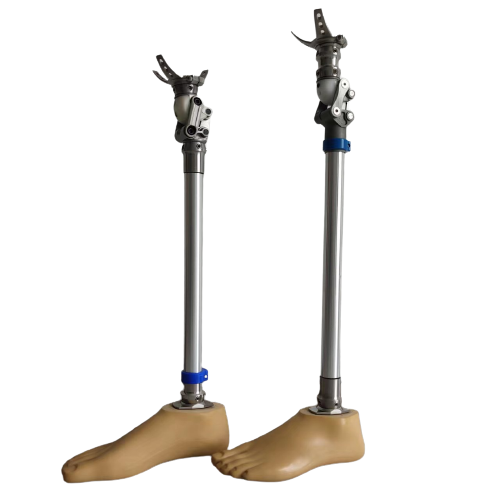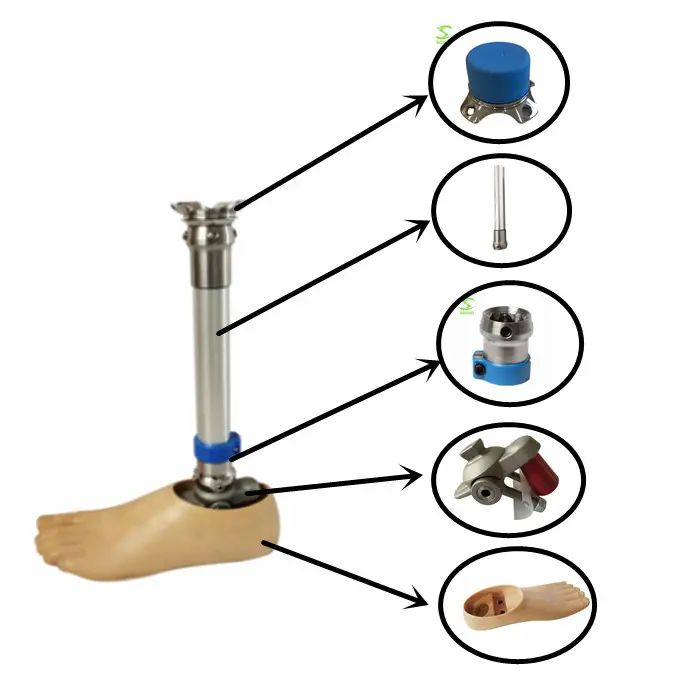Revolutionizing Mobility: Cutting-Edge Innovations in Artificial Limb Implantation
Release Time:
Jun 08,2025
Revolutionizing Mobility: Cutting-Edge Innovations in Artificial Limb Implantation The field of artificial limb implantation has witnessed remarkable advancements over the past few decades. These innovations are not only transforming the way we perceive prosthetics but are also enhancing the quality of life for countless individuals who have experienced limb loss. This article explores the latest
Revolutionizing Mobility: Cutting-Edge Innovations in Artificial Limb Implantation
The field of artificial limb implantation has witnessed remarkable advancements over the past few decades. These innovations are not only transforming the way we perceive prosthetics but are also enhancing the quality of life for countless individuals who have experienced limb loss. This article explores the latest technologies, surgical techniques, and rehabilitation methods in artificial limb implantation, shedding light on how they are shaping the future of mobility for amputees.
Table of Contents
- Understanding Artificial Limb Implantation
- History and Evolution of Artificial Limbs
- Current Technologies in Use
- Biomechanics and Design Innovation
- Surgical Techniques for Implantation
- Rehabilitation and Adaptation to New Limbs
- The Future of Artificial Limbs: What Lies Ahead
- Common Questions About Artificial Limb Implantation
Understanding Artificial Limb Implantation
Artificial limb implantation refers to the process of surgically placing a prosthetic device to replace a missing limb. These prosthetics can range from simple, mechanical devices to advanced, bionic systems that incorporate electronics and robotics. The goal is to restore functionality and improve the quality of life for individuals who have undergone amputations due to trauma, disease, or congenital conditions.
Types of Artificial Limbs
There are various types of artificial limbs, each designed to meet the specific needs of the user:
- Transradial Prostheses: For individuals with forearm amputations.
- Transfemoral Prostheses: Targeting those with above-the-knee amputations.
- Bionic Limbs: Incorporating advanced technology for enhanced functionality.
History and Evolution of Artificial Limbs
The concept of artificial limbs dates back thousands of years, with early examples found in ancient Egypt and Rome. Over the centuries, technology has dramatically evolved, from wooden pegs to sophisticated, high-tech solutions. The 20th century saw significant advancements during and after the World Wars, leading to improved designs and materials.
Milestones in Artificial Limb Development
- The 16th Century: The introduction of the first recorded prosthetic limb, made of metal.
- The 1940s: Advancements in plastics and lightweight materials.
- The 21st Century: The rise of bionic limbs with neuro-control technology.
Current Technologies in Use
Modern artificial limbs utilize a variety of technologies to improve usability and comfort. These include the use of lightweight materials like carbon fiber, advanced socket designs that adapt to the user, and smart technology that enables intuitive control.
Microprocessor-Controlled Prosthetics
Microprocessor-controlled prosthetic limbs are at the forefront of artificial limb technology. They utilize sensors to adjust the limb’s movement in real-time, allowing for a more natural gait and improved stability.
Benefits of Microprocessor-Controlled Prosthetics
- Enhanced adaptability to varying terrains.
- Improved energy efficiency during movement.
- Customizable settings for different activities.
Biomechanics and Design Innovation
The design of artificial limbs is heavily influenced by biomechanics—the study of movement and body mechanics. Innovations in this field have led to the development of prosthetics that closely mimic natural limb function.
Robotics in Prosthetic Development
Robotic technologies are being integrated into prosthetics, offering advanced movement capabilities. For example, some prosthetic hands now feature individual finger movement, allowing for more precise tasks.
3D Printing in Prosthetic Design
3D printing technology is revolutionizing the way prosthetics are designed and manufactured. Custom-fit prosthetic limbs can be created quickly and at a fraction of the cost of traditional manufacturing methods.
Surgical Techniques for Implantation
The success of artificial limb implantation largely depends on the surgical techniques employed. Surgeons now utilize minimally invasive approaches, reducing recovery times and complications.
Osseointegration Techniques
Osseointegration involves directly anchoring the prosthetic limb to the bone, offering greater stability and control. This technique has gained popularity due to its benefits over traditional socket-based prosthetics.
Advantages of Osseointegration
- Reduced skin irritation and discomfort.
- Improved control over limb movement.
- Enhanced overall prosthetic integration.
Rehabilitation and Adaptation to New Limbs
Post-implantation rehabilitation is crucial for successful adaptation to an artificial limb. Personalized rehabilitation programs focus on strength, mobility, and the psychological aspects of adjusting to life with a prosthetic.
Importance of Psychosocial Support
Adaptation to an artificial limb involves not just physical adjustments but also significant psychological changes. Support groups and counseling can play a vital role in helping individuals cope with their new reality.
Technology-Assisted Rehabilitation
Virtual reality and gaming technologies are increasingly used in rehabilitation programs. These tools provide engaging environments for individuals to practice movements and regain confidence in their abilities.
The Future of Artificial Limbs: What Lies Ahead
The future of artificial limb technology holds exciting possibilities. With advancements in materials science, robotics, and artificial intelligence, the next generation of prosthetics is likely to be even more functional and user-friendly.
Integration with Neural Interfaces
Research is underway to develop neural interfaces that allow users to control their prosthetic limbs through thought. This technology could revolutionize the user experience, leading to a more natural and intuitive operation of prosthetics.
Smart Prosthetics and IoT
The Internet of Things (IoT) is set to enhance prosthetic technology by allowing devices to communicate with each other, providing users with real-time feedback and data about their performance.
Common Questions About Artificial Limb Implantation
1. How long does it take to adjust to a prosthetic limb?
Adjustment times vary by individual, but many people can begin walking with a prosthetic limb within a few weeks to months following implantation, depending on rehabilitation efforts.
2. Are there any risks associated with artificial limb implantation?
As with any surgical procedure, there are risks, including infection, complications from anesthesia, and issues related to the prosthetic fitting.
3. How much do prosthetic limbs cost?
Costs can vary significantly based on the type of prosthetic, technology used, and insurance coverage. Basic prosthetics may cost several thousand dollars, while advanced bionic limbs can exceed $100,000.
4. Can I participate in sports with a prosthetic limb?
Yes, many athletes with prosthetic limbs participate in sports. Specialized prosthetics are designed for various activities, including running and swimming.
5. What advancements can we expect in the next few years?
Future advancements may include improved neural interfaces, lightweight materials, and enhanced artificial intelligence to make prosthetics more intuitive and user-friendly.
Conclusion
Innovative technologies in artificial limb implantation are reshaping the landscape of mobility for individuals with limb loss. From advanced prosthetic designs and surgical techniques to personalized rehabilitation strategies, these developments are paving the way for a future where individuals can achieve greater independence and quality of life. As research continues to evolve, the integration of smart technologies and neural interfaces promises to enhance the functionality of artificial limbs even further, ultimately redefining the human experience of mobility.
Keywords:
You Can Also Learn More About Industry Trends






